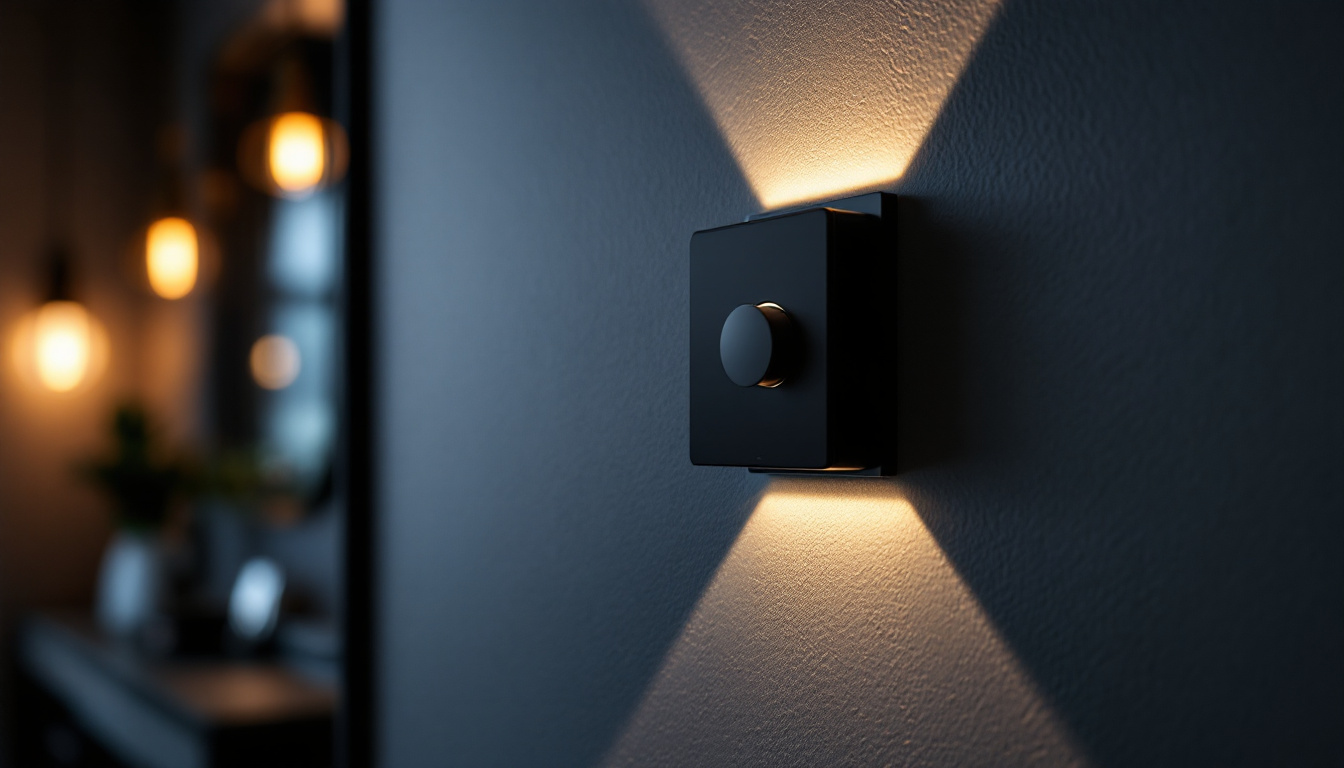
In the ever-evolving landscape of industrial lighting, LED technology has emerged as a game-changer. For lighting contractors, understanding the nuances of industrial LED light bulbs is essential for delivering optimal solutions to clients. This guide aims to provide a comprehensive overview of industrial LED light bulbs, their benefits, applications, and considerations for selection and installation.
Light Emitting Diodes (LEDs) have transformed the way we illuminate spaces. Unlike traditional incandescent or fluorescent bulbs, LEDs operate on a different principle, converting electricity directly into light. This fundamental difference brings a host of advantages that are particularly beneficial in industrial settings.
One of the most significant advantages of LED technology is its energy efficiency. Industrial LED light bulbs consume significantly less power than traditional lighting options, leading to substantial cost savings on energy bills. This efficiency not only benefits the bottom line but also contributes to a reduction in carbon footprint, aligning with sustainability goals. Moreover, the reduced heat output of LEDs means that they can be used in environments where excessive heat could pose a risk to equipment or safety, further enhancing their appeal in industrial applications.
LED bulbs boast a longer lifespan compared to their incandescent and fluorescent counterparts. Typically, an industrial LED light bulb can last up to 50,000 hours or more, reducing the frequency of replacements. This longevity translates to lower maintenance costs and less downtime, which is crucial in industrial environments where productivity is paramount. Additionally, LEDs are more resistant to shock and vibration, making them ideal for use in harsh industrial conditions where traditional bulbs might fail prematurely. This resilience not only ensures consistent lighting but also minimizes the risk of accidents caused by sudden outages.
LEDs provide high-quality light that can enhance visibility and safety in industrial settings. They are available in various color temperatures, allowing contractors to choose the right hue for specific applications. Whether it’s a cool white light for precision tasks or a warmer tone for comfort, LEDs can cater to diverse lighting needs. Furthermore, the ability to dim LEDs and control their brightness adds another layer of versatility, enabling facilities to customize lighting according to the time of day or specific operational requirements. This adaptability not only improves working conditions but can also lead to increased employee satisfaction and productivity, as workers can perform their tasks in optimal lighting conditions.
Industrial LED light bulbs are versatile and can be used in a wide range of applications. Understanding these applications enables contractors to recommend the most suitable lighting solutions for their clients.
In warehouses and distribution centers, effective lighting is crucial for maintaining efficiency and safety. Industrial LED lights provide bright, uniform illumination that helps in reducing accidents and improving worker productivity. High bay LED fixtures are particularly popular in these settings, as they can illuminate large areas with minimal energy consumption. Additionally, the longevity of LED bulbs means reduced maintenance costs, as they require less frequent replacement compared to traditional lighting options. This not only saves money but also minimizes disruptions in operations, allowing for a smoother workflow.
Manufacturing environments often require specialized lighting to ensure precision and safety. LED lights can be tailored to meet the specific needs of various manufacturing processes, from assembly lines to quality control stations. Their ability to produce bright, flicker-free light helps in reducing eye strain and enhancing focus among workers. Furthermore, many industrial LED systems come with adjustable color temperatures, allowing facilities to select warmer or cooler light depending on the task at hand. This adaptability can significantly enhance the working conditions, leading to better performance and higher quality output.
Outdoor industrial spaces, such as loading docks and storage yards, also benefit from LED lighting. Weather-resistant LED fixtures can withstand harsh conditions while providing reliable illumination. This is essential for ensuring safety during nighttime operations and improving visibility for both workers and vehicles. Moreover, the energy efficiency of LED lights translates to lower electricity bills, which is particularly beneficial for outdoor areas that require continuous lighting. The use of motion sensors and smart lighting technology can further enhance safety by ensuring that lights are only activated when needed, thus conserving energy and extending the lifespan of the fixtures.
Selecting the appropriate LED light bulbs for industrial applications requires careful consideration of several factors. Lighting contractors must evaluate the specific needs of their clients to recommend the best options.
When choosing LED bulbs, understanding the relationship between wattage and lumens is crucial. While wattage indicates energy consumption, lumens measure the amount of light produced. Contractors should focus on lumens to ensure that the selected bulbs provide adequate illumination for the intended space. A higher lumen output is essential for areas requiring bright lighting, such as warehouses and manufacturing floors.
Color temperature, measured in Kelvin (K), affects the quality of light emitted by LED bulbs. Cooler temperatures (above 5000K) produce a bright, white light that is ideal for tasks requiring precision, while warmer temperatures (below 3000K) create a more inviting atmosphere. Contractors should assess the specific needs of the space and the tasks performed within it to recommend the appropriate color temperature.
The beam angle of an LED bulb determines how light is distributed in a space. A narrow beam angle is suitable for focused lighting, such as task lighting in workstations, while a wider beam angle is better for general illumination in larger areas. Understanding the layout of the space and the intended use of the lighting will help contractors choose the right beam angle for optimal performance.
Proper installation of industrial LED light bulbs is vital for maximizing their performance and longevity. Contractors should adhere to best practices to ensure that the lighting systems function effectively.
Before installation, it is essential to verify that the LED bulbs are compatible with existing fixtures. Some LED bulbs may require specific types of fixtures or ballasts, while others can be retrofitted into traditional systems. Ensuring compatibility will prevent issues such as flickering or reduced performance.
The positioning of LED fixtures plays a crucial role in achieving optimal lighting. Contractors should consider factors such as the height of the fixtures, the layout of the space, and the tasks being performed. Properly positioned lights can eliminate shadows and ensure even illumination, enhancing safety and productivity.
Electrical considerations are paramount during installation. Contractors should assess the electrical infrastructure to ensure it can support the new LED lighting system. This includes checking voltage requirements, wiring compatibility, and circuit load. Proper electrical planning will help avoid potential issues and ensure a safe installation.
The transition to industrial LED light bulbs offers numerous benefits that extend beyond energy savings. Understanding these advantages can help contractors advocate for LED solutions to their clients.
While the initial investment in LED lighting may be higher than traditional options, the long-term cost savings are substantial. Reduced energy consumption leads to lower utility bills, and the extended lifespan of LEDs minimizes replacement costs. Over time, these savings can significantly impact a company’s operating budget.
Switching to LED lighting contributes to environmental sustainability. LEDs consume less energy, resulting in lower greenhouse gas emissions. Additionally, they do not contain hazardous materials like mercury, making them a safer choice for both the environment and human health. Promoting LED solutions aligns with the growing emphasis on sustainable practices in the industrial sector.
Improved lighting quality directly correlates with enhanced safety and productivity in industrial settings. Bright, uniform illumination reduces the risk of accidents and injuries, while better visibility allows workers to perform tasks more efficiently. By advocating for LED lighting, contractors can help create safer and more productive work environments.
While the benefits of industrial LED light bulbs are compelling, contractors should also be aware of potential challenges and considerations when recommending these solutions.
The upfront cost of LED lighting can be a barrier for some clients. Although the long-term savings justify the investment, contractors may need to provide detailed cost-benefit analyses to help clients understand the financial advantages. Educating clients about the return on investment can facilitate the transition to LED lighting.
As LED technology continues to evolve, some clients may be hesitant to adopt new lighting solutions. Contractors should stay informed about the latest advancements and be prepared to address any concerns clients may have. Providing demonstrations or case studies showcasing successful LED implementations can help alleviate apprehensions.
In some regions, there may be specific regulations governing industrial lighting. Contractors should be familiar with local codes and standards to ensure that the selected LED solutions comply with all requirements. This knowledge is essential for avoiding potential legal issues and ensuring client satisfaction.
Industrial LED light bulbs represent a significant advancement in lighting technology, offering numerous benefits for both contractors and clients. By understanding the intricacies of LED lighting, contractors can provide informed recommendations that enhance safety, productivity, and sustainability in industrial settings. As the demand for energy-efficient solutions continues to grow, embracing LED technology will position contractors as leaders in the industry.
Ultimately, the transition to industrial LED lighting is not just a trend; it is a strategic move towards a more efficient and sustainable future. By staying informed and adapting to the changing landscape of lighting technology, contractors can ensure they meet the evolving needs of their clients while contributing to a greener planet.
Ready to elevate your lighting solutions and lead the industry with energy-efficient, high-quality LED lighting? Look no further than LumenWholesale for all your industrial lighting needs. Our extensive selection of spec-grade lighting products comes at unbeatable wholesale prices, ensuring you get the best value for your investment. Say goodbye to inflated markups and hello to hassle-free bulk buying with free shipping. Don’t compromise on quality or cost—choose LumenWholesale for reliable, high-performance lighting that meets the highest industry standards. Make the strategic move towards a brighter, more sustainable future and experience Wholesale Lighting at the Best Value today.

Explore the fascinating science of Ballard Lights and discover how lighting contractors can leverage this knowledge to enhance their projects.

Discover how black dimmer switches are revolutionizing the lighting industry and becoming an essential tool for contractors.

Discover why light switch timers are essential tools for lighting contractors.

Discover the essential guide for lighting contractors on outlet switches, covering installation tips, safety protocols, and innovative solutions to enhance your projects.